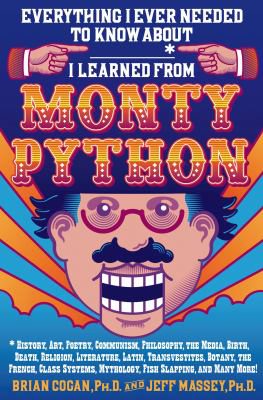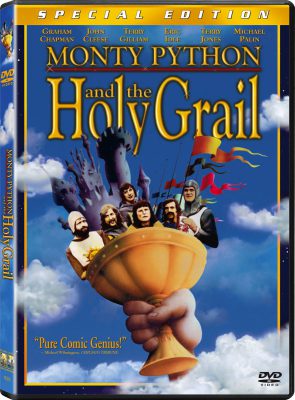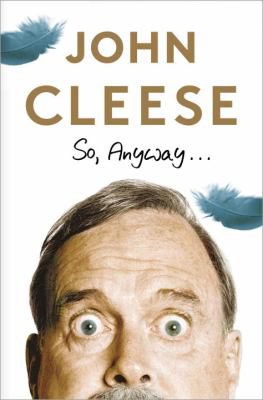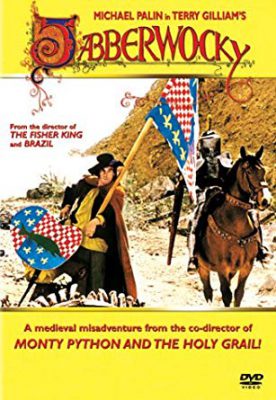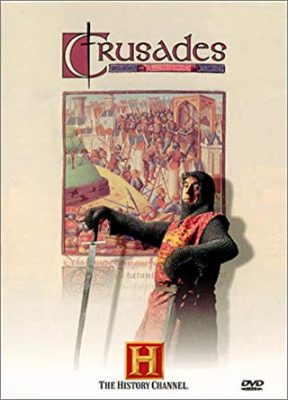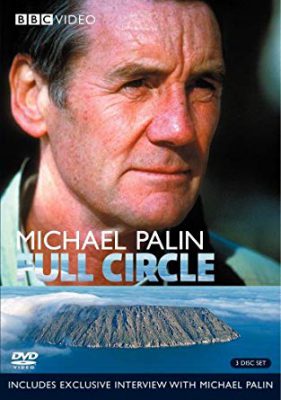And Now for Something Completely Different: Monty Python’s entertainment legacy
Posted on August 21, 2019 at 6:00 am
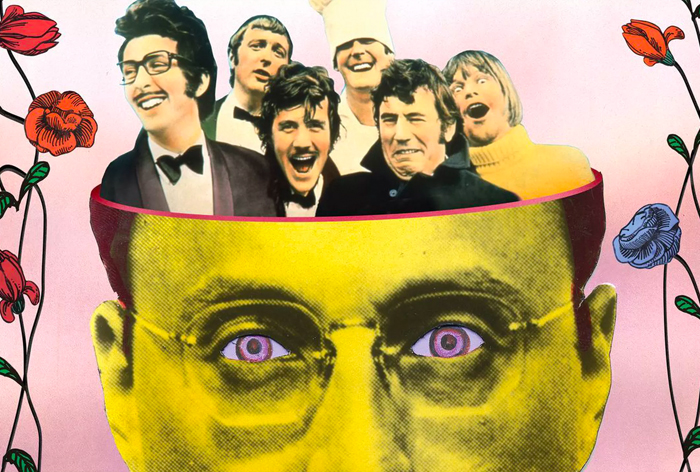
By Melissa Rhoades
If you’ve never experienced Monty Python, you’ve missed a big part of comedy history. The group played an integral role in the evolution of sketch humor. In fact, their influence is so massive that The Atlantic magazine called them “The Beatles of Comedy” in 2013.
Like the Beatles, Monty Python’s influence extends beyond the English-speaking world. Take, for example, hundreds of people in Budapest, Hungary, having fun in a 2019 parade based on the 1970 skit “The Ministry of Silly Walks”.
Also like the Beatles, the group influenced numerous younger talents. Famous fans include Matt Groening (creator of The Simpsons), Sacha Baron Cohen (creator of Ali G and Borat), Seth MacFarlane (creator of The Family Guy), Seth Meyers (Saturday Night Live alum and Late Night host), Trey Parker and Matt Stone (creators of South Park and The Book of Mormon musical).
Unlike the Beatles, the five British members of the six-person ensemble were educated at the most elite learning institutions in England: Oxford and Cambridge.
Yet their comedy was deeply irreverent and anti-establishment. As The Atlantic’s 2013 article states, “[t]hey had automatic respect for nothing. Everything was fit matter for comedy… They created a parallel world in which nothing was serious.”
Or rather, they created a world in which nothing was off limits. For them, satire was a tool for exploring the full spectrum of life—everything from shopping, bureaucracy, and daily gossip to wars and historic atrocities like Roman crucifixion and the Spanish Inquisition.
This take-no-prisoners approach was often aimed squarely at broadcast media. Skits frequently mocked television and film conventions, including stereotypical depictions of minorities and women.
But don’t expect political correctness. There’s something to offend everyone in Monty Python’s oeuvre, and ironically-intended cultural insensitivities can be jarring, especially from a 2019 perspective.
Nevertheless, the Pythons continue to garner praise for their intellectual chops. To learn how their work engages linguistic theory, political theory, and history (among other things) check out Everything I Ever Needed to Know About _____* I Learned from Monty Python. For thoughts on how their work reflects elements of existentialism, feminism, Buddhism, logic, and more, check out Monty Python and Philosophy: Nudge, Nudge, Think, Think!
The group also experimented with modes of presentation.
Often labeled “surreal” (aka dreamlike), the Pythons relished mixing a good dose of absurdity in their work. To ensure they weren’t repeating previously covered comic ground, they developed a stream-of-consciousness flow that allowed sketches to blend into each other with no rational connection.
This allowed the group to avoid conventional set ups and punch lines. It also allowed them to showcase a range spanning from slapstick to word play to desert-dry wit.
On their quest for fresh material, the group experimented with several stylistic elements, including:
- Cold opens (jumping directly into a skit before the opening credits)
- Breaking the fourth wall (talking directly to the audience mid-sketch)
- Meta commentary (dialogue about a skit, in the skit)
- Mash ups (for example, communist leaders playing a game show)
- Incorporating animation in a show for adults
But how did this blend of cultural irreverence, intellectual layering, and stylistic innovation evolve?
By 1966, the British future-Pythons had moved on from Oxbridge to become television comedy writers. Those who hadn’t met at university got to know each other while working on TV shows. Comedy chemistry struck, and by 1969 they were working on their own show, joined by an American ex-pat with a knack for animation.
Monty Python’s Flying Circus originally aired on the BBC between 1969 and 1974. It’s now streamable on Netflix, in plenty of time to celebrate the 50th anniversary of its first broadcast on October 5, 2019.
In 1971, the group released its first feature-length film, And Now for Something Completely Different. The title was inspired by a phrase uttered repeatedly in Flying Circus, and the film consists mainly of TV sketches, reshot for the big screen.
After Flying Circus, the Pythons released their second feature film, Monty Python and the Holy Grail (1975), this time creating all new material. Three more feature films followed, Monty Python’s Life of Brian (1979), Monty Python Live at the Hollywood Bowl (1982), and Monty Python’s the Meaning of Life (1983). After that the group disbanded, but they’ve continued to work on projects both solo and in collaboration ever since.
There’s not much room here to gush about each Python individually—which is a shame because they’ve impacted a lot of people, including me. I spent my teenage years watching Flying Circus reruns and listening to Monty Python vinyl records (yes, they released albums too!). My parents enthusiastically took me to see The Holy Grail at an art house cinema when I was in high school, and it wasn’t long until I’d seen all their films and had begun to explore their solo accomplishments as well.
Revisiting their work now, I realize I wouldn’t be who I am today without these six individuals. Here are just a few highlights from each of their lives and careers.
Known for his roles as King Arthur in The Holy Grail and Brian in The Life of Brian, Graham Chapman excelled in both medicine and theater while studying to be a doctor at Cambridge. While there, he became comedy writing partners with fellow student and future Python John Cleese. In 1972, Chapman came out as homosexual on television, making him one of the first celebrities to live an openly gay life. In 1980, he published his memoir, A Liar’s Autobiography: Volume VII. He also wrote and starred in Yellowbeard (1983). Later in the 1980s, Chapman did a series of speaking tours on college campuses. I was lucky enough to see him at the University of Kansas, where he talked openly about being an alcoholic and being a member of the Dangerous Sports Club (inventors of modern bungee jumping). Sadly, Chapman died of cancer in 1989.
John Cleese studied law at Cambridge, where he became writing partners with Chapman. Both were members of the Cambridge Footlights Drama Club, and by the time they began working on TV shows, they had performed with the Footlights in Edinburgh, London, and on Broadway. According to Cleese’s 2014 memoir So Anyway, he and Chapman were working on a dead-end screenplay when they invited the other future-Pythons to generate a show together. Thus, Monty Python was born! In 1975, Cleese and Connie Booth co-created and co-starred in the hit TV show, Fawlty Towers. Cleese also wrote and co-starred in the 1988 film A Fish Called Wanda. When offered the chivalric title CBE (Commander of the Most Excellent Order of the British Empire) in 1996, he refused it, calling it “silly.” He declined a Life Peerage in 1999, which would have entitled him to be a member of the House of Lords. For more on Cleese’s views, check out Professor at Large: The Cornell Years.
In the 1960s, Terry Gilliam was a young American with a political science degree and a penchant for Mad magazine. He began his career as an animator and cartoonist. Becoming increasingly frustrated with American culture and politics, Gilliam emigrated and settled in England where he found work at the BBC. When Monty Python formed, he became their animator, occasionally also appearing in skits. His directorial debut was co-directing The Holy Grail with fellow Python Terry Jones. After Python, Gilliam became famous as the director of several cult classics including Jabberwocky (1977, inspired by the Lewis Carroll poem), Time Bandits (1981), Brazil (1985), The Fisher King (1991), 12 Monkeys (1995), and Fear and Loathing in Las Vegas (1998, based on the Hunter S. Thompson book). His memoir is titled Gilliamesque.
Eric Idle was in a younger class at Cambridge than Chapman and Cleese, where he studied English and joined The Footlights. According to his 2018 autobiography Always Look on the Bright Side of Life: A Sortabiography, Idle opened up full Footlights membership to female students in 1965 when he was club president. He wrote comedy material on his own and is known for writing famous Python songs as well as sketches. In 1975, Idle created the TV show Rutland Weekend Television with Neil Innes. The Beatles parody band The Rutles evolved out of this show and spurred the affectionate mockumentary All You Need Is Cash, which was created with the help of Lorne Michaels and Saturday Night Live. More recently, Idle is best known for bringing elements of The Holy Grail to the live stage with the musical Spamalot.
The only Welsh member of Monty Python, Terry Jones studied history at Oxford, where he met fellow student and future Python Michael Palin. Soon, they became comedy writing partners, a collaboration that landed them their own TV show in January 1969, The Complete and Utter History of Britain. Jones is said to have been the main influence behind Flying Circus’ stream-of-consciousness style. He co-directed The Holy Grail with Gilliam, and directed Life of Brian and The Meaning of Life on his own. Later, he wrote the screenplay for Labyrinth (1986) and directed the films Erik the Viking (1989), Mr. Toad’s Wild Ride (The Wind in the Willows) (1996), and Absolutely Anything (2015). Returning to his educational background, Jones has also written and presented several historical documentaries including Crusades (1995), Terry Jones’ Medieval Lives (2004), and Terry Jones’ Barbarians (2006).
Michael Palin also studied history at Oxford, where he joined The Oxford Revue and met Jones. In 1975, Palin and Jones created the pilot for their 1976 TV show Ripping Yarns, a parody of traditional boys’ adventure stories. Palin’s post-Python acting filmography includes Jabberwocky, Brazil (Gilliam’s dystopian film), A Fish Called Wanda, and The Death of Stalin (2017). In the 1980s, Palin began to appear in travel documentaries, and he eventually began to write and present his own. Around the World in 80 Days with Michael Palin (1989), Pole to Pole (1992), Full Circle (1997), and Brazil (2012) are some of his best-known documentaries. In 2000, Palin received the CBE order of chivalry for his work in television. He received a knighthood (KCMG) in 2019 for service to travel, culture, and geography. While Palin hasn’t published a memoir, he has made excerpts of his diaries available.
As you sally forth from the doldrums of conventional entertainment to discover (or rediscover) the magic of Monty Python, keep in mind the following quote from Flying Circus—and don’t say I didn’t warn you:
“There are a great many people in the country today, who through no fault of their own, are sane.”

Tags: BBC, British, Cambridge, comedy, English, Eric Idle, Flying Circus, fourth wall, Graham Chapman, history, Holy Grail, John Cleese, Life of Brian, mash-ups, Meaning of Life, meta commentary, Michael Palin, Monty Python, Oxford, sketch comedy, Terry Gilliam, Terry Jones

